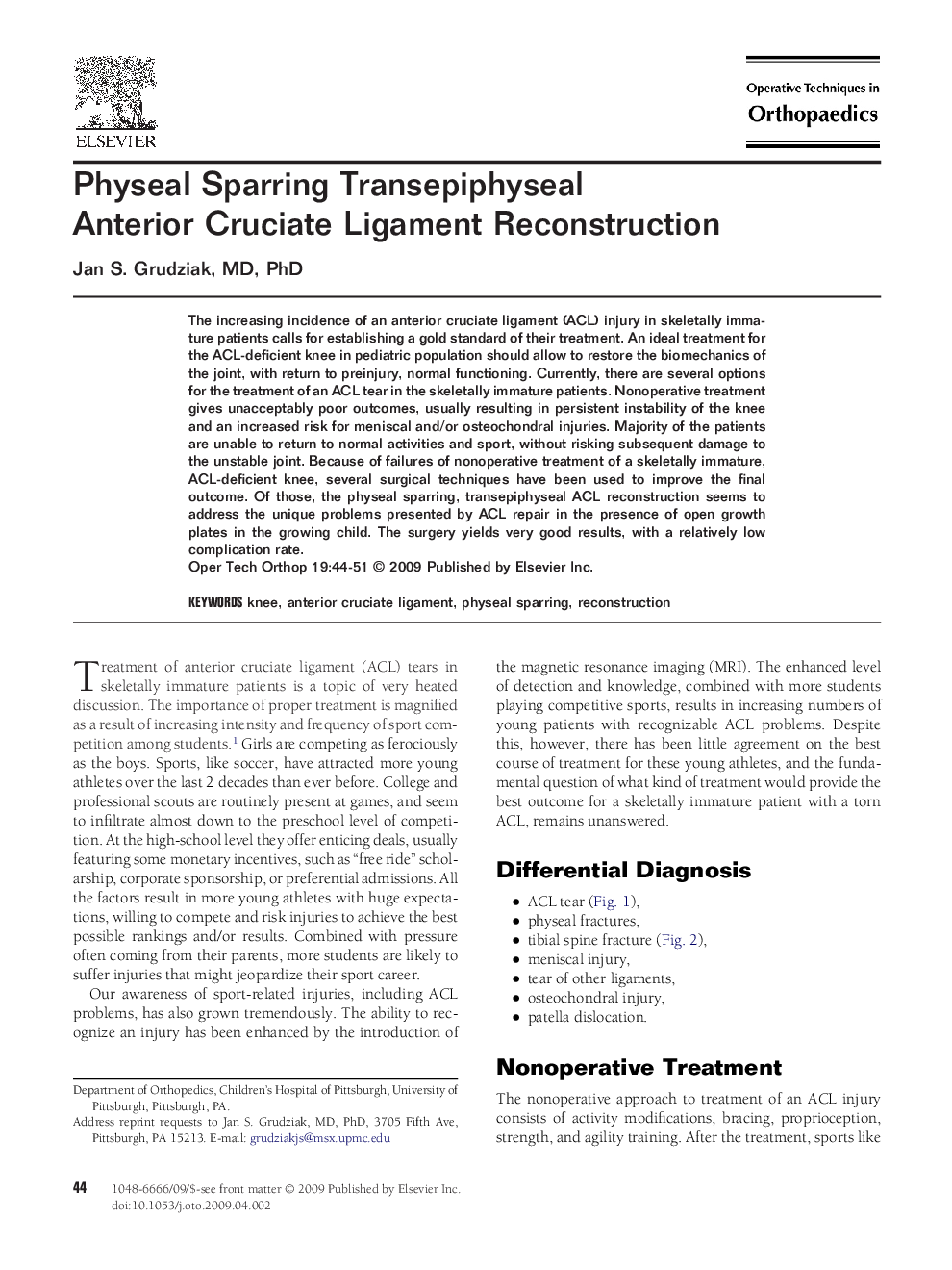| Article ID | Journal | Published Year | Pages | File Type |
|---|---|---|---|---|
| 4079231 | Operative Techniques in Orthopaedics | 2009 | 8 Pages |
The increasing incidence of an anterior cruciate ligament (ACL) injury in skeletally immature patients calls for establishing a gold standard of their treatment. An ideal treatment for the ACL-deficient knee in pediatric population should allow to restore the biomechanics of the joint, with return to preinjury, normal functioning. Currently, there are several options for the treatment of an ACL tear in the skeletally immature patients. Nonoperative treatment gives unacceptably poor outcomes, usually resulting in persistent instability of the knee and an increased risk for meniscal and/or osteochondral injuries. Majority of the patients are unable to return to normal activities and sport, without risking subsequent damage to the unstable joint. Because of failures of nonoperative treatment of a skeletally immature, ACL-deficient knee, several surgical techniques have been used to improve the final outcome. Of those, the physeal sparring, transepiphyseal ACL reconstruction seems to address the unique problems presented by ACL repair in the presence of open growth plates in the growing child. The surgery yields very good results, with a relatively low complication rate.
